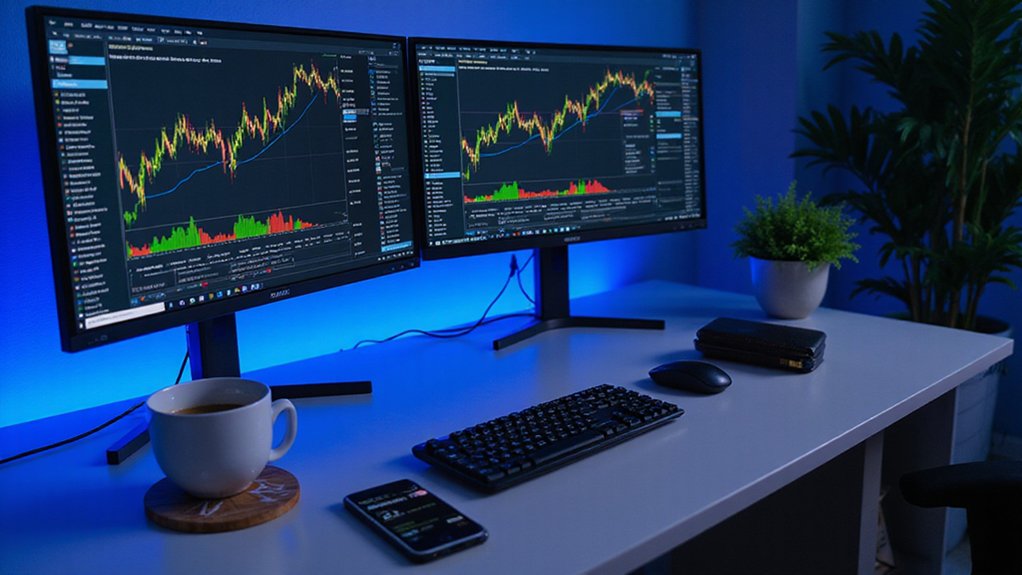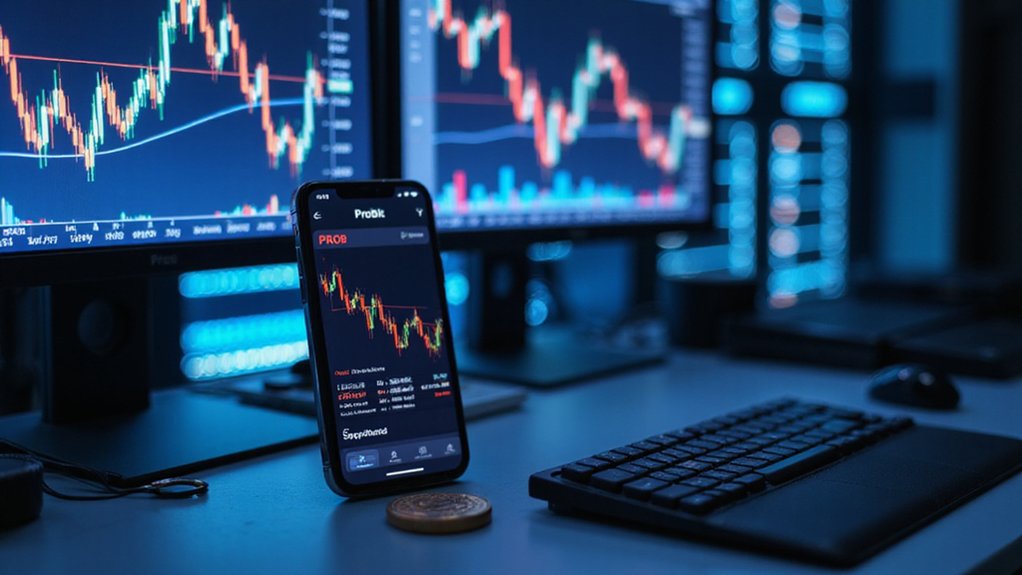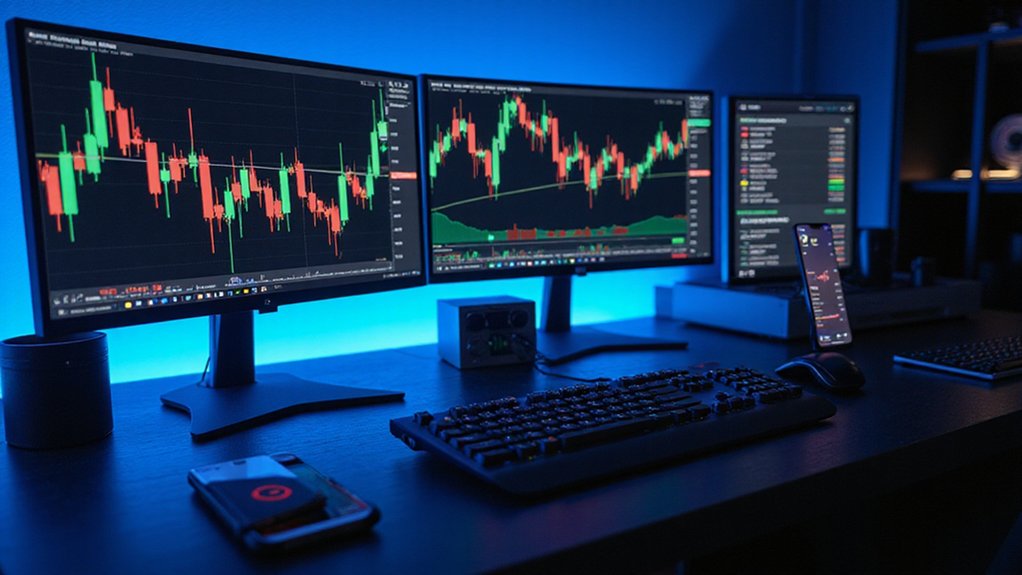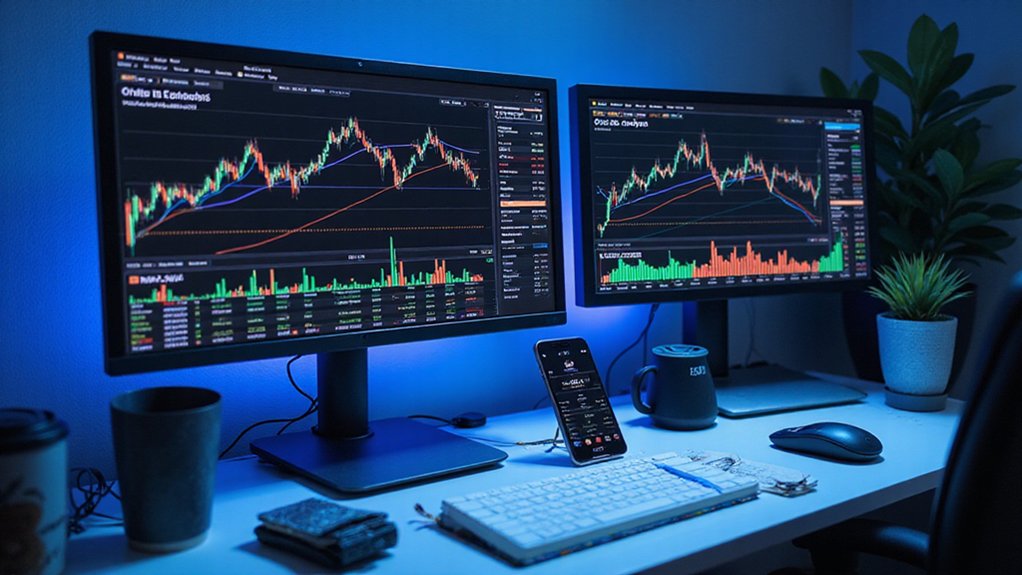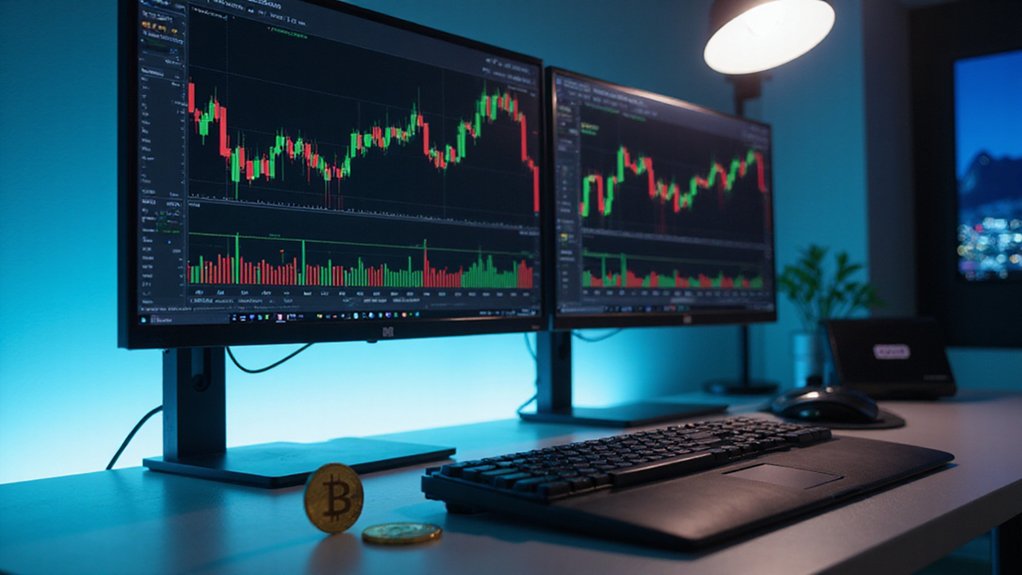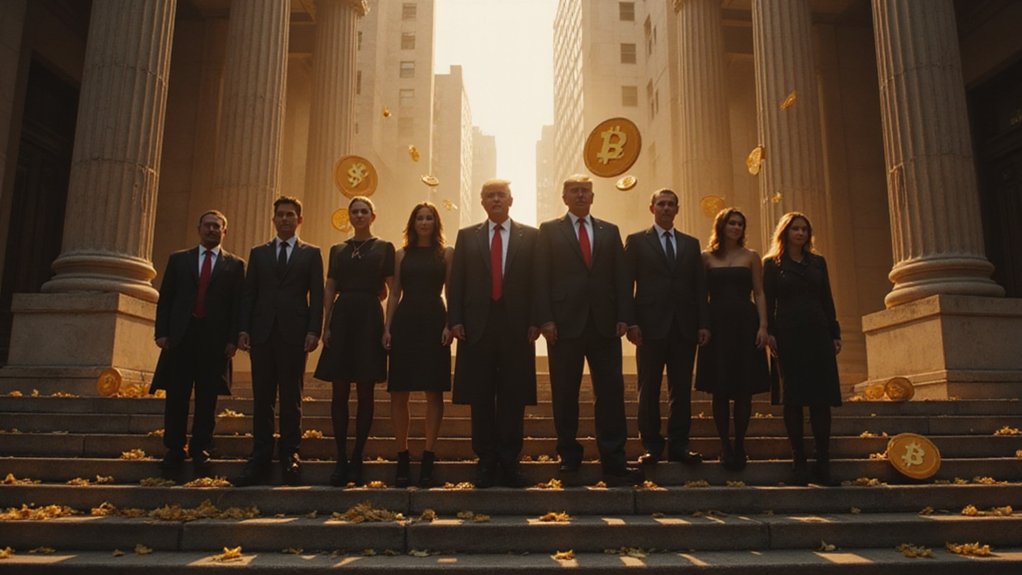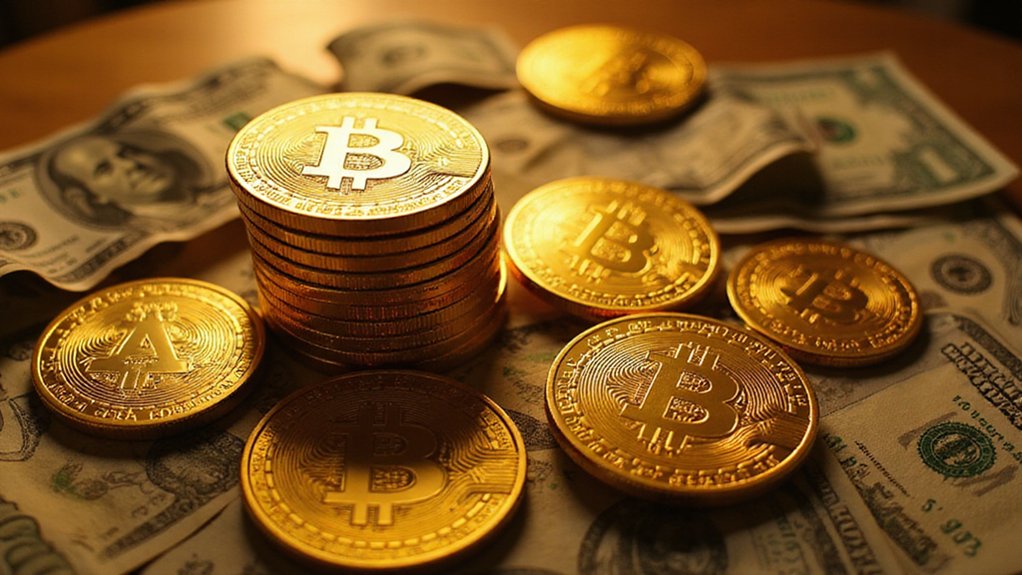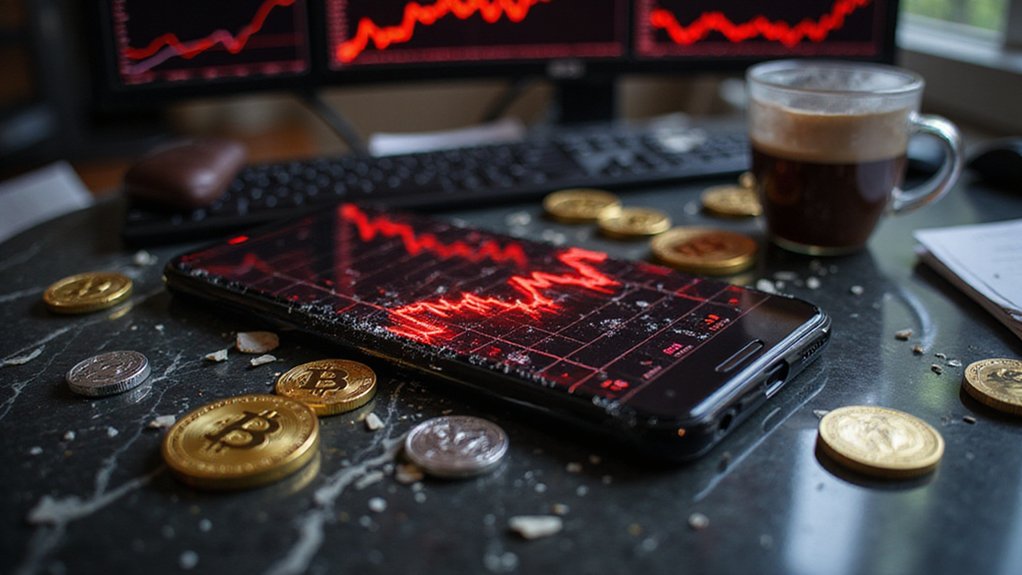Kraken Exchange offers a streamlined onboarding process for crypto neophytes, combining robust security protocols (mandatory two-factor authentication, cold storage) with an interface that scales from beginner-friendly to professional-grade analytics. Users navigate from account creation through KYC verification to trading across multiple asset classes—executing market orders, limit positions, or direct swaps as their confidence grows. The platform’s staking services and educational resources stand ready once the inevitable evolution from cautious dabbler to market participant occurs.
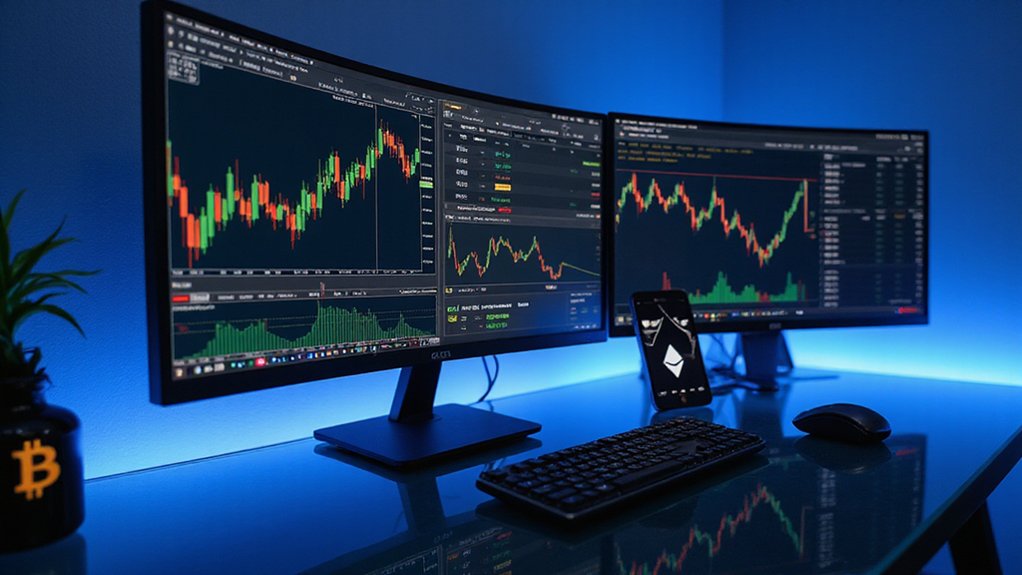
The labyrinthine world of cryptocurrency trading—with its volatile price swings, esoteric terminology, and seemingly impenetrable barrier to entry—has become considerably more navigable thanks to platforms like Kraken Exchange.
Established as one of the more reputable trading venues in the cryptosphere, Kraken offers neophytes a structured pathway into digital asset markets without sacrificing the robustness demanded by seasoned traders.
Kraken balances accessibility for newcomers with the sophisticated functionality veteran crypto traders demand.
Initiating one’s journey requires the rather pedestrian task of account creation—email, username, password, and geographic location—followed by the now-ubiquitous KYC verification process (a regulatory necessity that cryptocurrency’s early libertarian advocates might have found appalling).
Securing one’s digital treasury with two-factor authentication is non-negotiable; the cryptocurrency landscape remains rife with opportunistic malfeasance.
Kraken’s interface presents market data with clinical precision, allowing traders to absorb price action across multiple timeframes while toggling between basic and advanced views (the latter, “Kraken Pro,” offers reduced fees—a not-insignificant consideration for high-frequency traders).
Navigation between markets, balances, and transaction history remains mercifully intuitive despite the platform’s functional density.
Funding options span traditional bank transfers to card payments, with varying processing times and fee structures.
The prudent trader examines these differentials before committing capital; patience often yields financial advantage.
Once capitalized, users can execute trades through market orders (immediate execution at prevailing prices) or limit orders (execution contingent upon reaching specified price points)—the latter offering protection against slippage during periods of heightened volatility.
The platform’s swap feature facilitates direct cryptocurrency-to-cryptocurrency exchanges without intermediate fiat conversion.
Beyond mere speculation, Kraken offers staking services—allowing holders of proof-of-stake cryptocurrencies to generate yield through network participation.
These passive income mechanisms (with rates varying by asset) provide welcome counterbalance to market downturns.
For traders willing to navigate its learning curve, Kraken presents an extensive ecosystem where one might shift from cautious experimentation to sophisticated trading strategies.
The platform’s educational resources serve as welcome scaffolding for this progression—transforming bewildered novices into informed market participants who can confidently trade a variety of assets including Litecoin (LTC), a veteran cryptocurrency known for its faster transaction speeds.
Traders concerned with security should note that some exchanges like cold wallet storage systems have become industry standard for protecting digital assets from potential breaches.
Frequently Asked Questions
How Does Kraken’s Security Compare to Other Cryptocurrency Exchanges?
Kraken boasts superior security protocols compared to many rivals.
With 97% of assets in cold storage—exceeding Binance’s percentage—and maintaining air-gapped facilities under constant surveillance, Kraken establishes itself as a security-forward exchange.
While Coinbase offers comparable 2FA protection, Kraken’s extensive cold storage implementation and unblemished breach history give it an edge.
The exchange has completed over 20 third-party security audits and maintains 100% reserves, a testimony to its commitment to security rigor.
What Fees Does Kraken Charge for Different Trading Volumes?
Kraken employs a tiered fee structure based on 30-day trading volume.
Low-volume traders ($0-$10,000) face maker/taker fees of 0.25%/0.40%.
Mid-volume traders ($10,001-$100,000) enjoy reduced rates between 0.20%-0.14% (maker) and 0.35%-0.24% (taker).
High-volume participants (over $1,000,000) benefit from substantially lower fees—as little as 0% for makers and 0.10% for takers on volumes exceeding $10,000,000.
Additionally, perpetual futures incur a 0.0003% hourly funding rate.
Can I Earn Interest on Crypto Holdings With Kraken?
Yes, Kraken offers interest-earning opportunities through their crypto holdings program.
Investors can secure rates ranging from a modest 1.25% for Bitcoin to more substantial returns of 5-8% for Solana.
USDC holdings are particularly attractive, generating a 5.5% APY through opt-in rewards.
This passive income stream—remarkably superior to traditional savings accounts (which, frankly, barely acknowledge inflation these days)—requires simply depositing cryptocurrencies into the platform and allowing market mechanisms to do the heavy lifting.
Is Kraken Available in My Country or Region?
Kraken’s availability hinges entirely on one’s geographic coordinates—a rather consequential detail in the regulatory chess game of cryptocurrency.
The exchange operates in over 190 countries while maintaining a blacklist of 14 jurisdictions (including Russia, North Korea, and Cuba) where services remain inaccessible.
Determining access requires consulting Kraken’s country-specific documentation, as even supported regions may face varying degrees of functionality based on local regulatory frameworks that dictate verification requirements and available features.
How Long Do Withdrawals and Deposits Typically Take on Kraken?
Withdrawal and deposit timelines on Kraken vary considerably by method.
SEPA withdrawals typically process within 0-5 business days, while SWIFT transfers require 1-5 business days.
Cryptocurrency transactions progress through several stages—internal checks, gateway processing, blockchain broadcast, and confirmation—with timing contingent upon network congestion.
Certain security triggers (password changes, account modifications) may impose additional 24-hour holds.
ACH Plaid deposits face a 7-day withdrawal restriction, and banking holidays can further extend processing windows.
